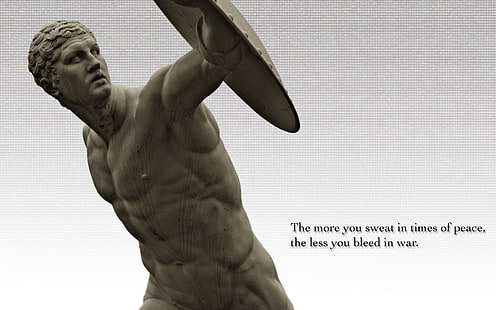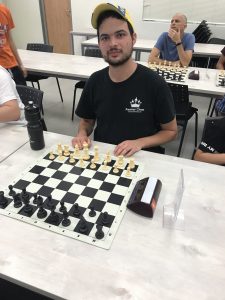
By Premier Chess CEO National Master Evan Rabin

Beginner students will often capture pieces, without considering why their opponents are allowing them to do so. To the contrary, our 118th Podcast Guest Grandmaster Maxim Dlugy often reminds us how chess is like a duel. If your opponent offers you something, your initial reaction should not be to take it but rather be suspect as to why he is allowing you to have it. One may decide to leave a knight where it can be captured, if it means capturing his opponent’s queen on the next turn. There may also be something more complicated, like a hidden attack.
Even more experienced players will not abide by Dlugy’s guideline. For instance, in the 5th round of the U.S Open 2021, I was playing against an “A”player who I bet in a tournament in Manhattan 3-years ago. When I offered a draw, he almost instantly took it and afterwards told me he felt a little relieved since he was in time pressure and I was 250 points higher rated. However, truth be told, I only offered it because I knew I was losing; when we looked at it together with the engine, Stockfish gave his position +4.9, which equates to almost a rook. 
Who knows what would have been the ultimate result if the game continued but he likely would have won. If you want your opponent do something in chess or any other area of life, you must force him to do so. With this in mind, here are the most forcing type of moves, 10 being the highest and 1 being only slightly forcing:
10- Check: absolutely must be dealt with, according to rules of chess (I heard our 126th Podcast Guest Elizabeth Spiegel , when coaching students years back at the Bruce Bowyer Memorial tournament).
9- Threaten Checkmate.
8 – Attack a queen, trade queens, threaten to promote.
7-
6-
5- Attack a rook, trade rooks.
4-
3-Attack a bishop or a knight, trade minor piece.
2-Theaten to make a trade that rips open kingside.
1- Attack a pawn.
While forcing moves are not always good, one should strongly consider every single check, capture and threat. These moves can help you create tactics to lead to winning of material and checkmate. That said, one should not making an attacking move just for the sake of making an attacking move. One should only do one if he looks at the move his opponent will likely respond with and sees he will get some benefit.


Thank you for publishing good content
[url=[Link deleted]
<a href="[Link deleted]
[asd]([Link deleted]
Explore, conquer, repeat.
Don’t miss out on your chance to win big – join our online casino today and start spinning to win!
Earn loyalty points and redeem them for cash rewards!
The adventure of a lifetime is just a click away!
Chess teaches you to think twice before grabbing an easy piece, always questioning your opponent’s plan. That mindset has stuck with me, even when I switch to something more lighthearted like playing at <a href="[Link deleted]mama. I started with cautious bets, but after a few rounds, I scored a decent win on the slots. It’s that mix of strategy and surprise that keeps me coming back for more fun after a long day of thinking.
768867
One important tip is to always download from a secure and updated site because some websites may share outdated versions or unsafe files. Many trusted APK providers release the latest builds regularly, so you can stay updated whenever the original developers release new features. Following these steps ensures a safe installation and smooth gameplay. Why Players Find BitLife Mod APK So Addictive The addictive nature of BitLife Mod APK comes from its balance of surprise and control. Even though you have God Mode and unlimited money, the game still throws random events at you—illness, accidents, opportunities, and unexpected twists—that keep every life unique.
With a strong focus on detail and client needs, this team delivers results that truly make a difference.구글찌라시 Their attention to detail and proactive communication set them apart as leaders in delivering exceptional service.
If you, like me, are looking for something special, then I can say that USA [Link deleted]has done everything so that each of you can find what will be so important. For me it was important that they offer many options and are willing to consider all your wishes and do everything possible to make sure you get the engagement ring you have been dreaming of.
Exceptional attention to detail and a proactive approach ensure outstanding project delivery.강남쩜오 Working with this provider guarantees a seamless experience backed by years of proven expertise and dependable service.
This was a key factor for me. With Turbowinz Casino, the withdrawal process is straightforward and surprisingly fast. I’ve had my winnings processed within hours, which builds a lot of trust in the platform compared to others.
Absolutely. The mobile experience at Living Sky Casino is fantastic on my iPhone. Whether I’m on the couch or on the go, the games run flawlessly. It’s perfect for squeezing in some quick fun during my evening relaxation time.
Mystery, and when a name has all three elements, it becomes more than just a label—it becomes a signature identity that members feel proud to represent, especially on social platforms, competitive arenas, and creative spaces where first impressions can determine whether people join, follow, or feel inspired by your team, and the beauty of edgy names is that they allow you to express intensity.
Discover why Pink site is a favorite among UK players. This platform combines style with serious winning potential. Check out to see the latest blockbuster slots and promotions. With generous bonuses and a user-friendly interface, it is a hit from Scotland to the South Coast. It is the perfect time to join the pink party.